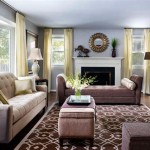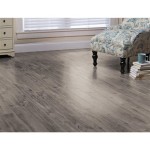Embracing Timeless Warmth: Vintage Rustic Home Decor Ideas
Vintage rustic home decor evokes a sense of nostalgia and comfort, drawing inspiration from simpler times and the beauty of natural materials. It is a style characterized by weathered textures, repurposed items, and a warm, inviting atmosphere. This design aesthetic blends well with both traditional and modern homes, offering a unique opportunity to create a space that is both stylish and deeply personal. The key to successfully incorporating vintage rustic elements lies in understanding the nuances of the style and carefully selecting pieces that complement each other to establish a cohesive and charming environment.
The popularity of vintage rustic decor stems from its ability to create a welcoming space that feels lived-in and authentic. Unlike sleek, minimalist designs, vintage rustic embraces imperfections and celebrates the history of each piece. This approach not only adds character to a home but also promotes sustainability by encouraging the reuse and repurposing of older items. The result is a home that feels both stylish and environmentally conscious.
Key Elements of Vintage Rustic Decor
Several core elements define the vintage rustic aesthetic. Understanding these elements is crucial for effectively incorporating the style into a home.
Natural Materials: Wood is the cornerstone of vintage rustic decor. Reclaimed wood, with its knots, grains, and imperfections, is particularly prized. It can be used for flooring, walls, furniture, and accent pieces. Stone, another natural material, adds texture and character, especially when used for fireplaces, exposed walls, or countertops. Metal, especially aged or patinated versions of iron, copper, and brass, also plays a significant role, bringing an industrial edge to the rustic charm. Linen, burlap, and cotton fabrics in neutral tones are favored for upholstery, curtains, and bedding, contributing to the overall sense of warmth and comfort.
Distressed Finishes: Distressed finishes, whether on furniture, walls, or accessories, are integral to the vintage rustic look. This can be achieved through techniques like sanding, painting with chalk paint, or using aged-looking stains. The goal is to create a sense of age and history, as if the item has been well-loved for generations. Imperfections like chipped paint, dents, and scratches are not flaws but rather add to the character and authenticity of the piece. This technique can be applied to both new and vintage items to seamlessly integrate them into the overall design.
Repurposed and Upcycled Items: One of the defining features of vintage rustic decor is the use of repurposed and upcycled items. Old windows can be transformed into picture frames or decorative wall art. Vintage crates can be used as storage solutions or side tables. Metal buckets can be repurposed as planters. Not only does this creative approach add unique character to a home, but it also promotes sustainability and reduces waste. The key is to look beyond an item's original purpose and envision its potential in a new context.
Incorporating Vintage Rustic Decor into Different Rooms
Vintage rustic decor can be successfully integrated into various rooms throughout the house, each space lending itself to different interpretations of the style.
Living Room: In the living room, a vintage rustic aesthetic can be achieved through a combination of comfortable seating, natural textures, and carefully chosen accessories. A reclaimed wood coffee table or side table adds warmth and character, while a linen or burlap sofa provides a cozy seating area. An antique rug with a faded pattern can anchor the space, adding a touch of history and visual interest. A fireplace, whether it is original or a modern interpretation, is a natural focal point and can be enhanced with stone or brick accents. Accessorize with vintage books, antique clocks, and rustic candle holders to create a welcoming and inviting atmosphere.
Kitchen: The kitchen offers numerous opportunities to incorporate vintage rustic elements. Open shelving made from reclaimed wood is ideal for displaying vintage dishes, cookware, and pantry staples. A farmhouse sink adds a touch of historical charm, while a butcher block countertop provides a practical and aesthetically pleasing work surface. Metal accents, such as copper pots and pans or wrought iron lighting fixtures, complement the natural materials. Consider using vintage-inspired hardware on cabinets and drawers to further enhance the rustic feel. A kitchen island made from repurposed materials can serve as a focal point and provide additional storage and workspace.
Bedroom: In the bedroom, vintage rustic decor can create a serene and restful environment. A wooden bed frame, either reclaimed or made with a distressed finish, establishes the foundation for the design. Soft, natural fabrics like linen and cotton should be used for bedding and curtains to promote a sense of comfort and relaxation. An antique dresser or nightstand adds character and provides storage space. Incorporate personal touches with vintage photographs, old books, and rustic artwork. Soft lighting, such as a bedside lamp with a vintage-inspired shade, can enhance the overall ambiance.
Sourcing Vintage Rustic Decor
Sourcing vintage rustic decor requires a combination of resourcefulness and patience. Numerous avenues can be explored to find unique and authentic pieces.
Antique Stores and Flea Markets: Antique stores and flea markets are treasure troves of vintage and antique items. These venues offer a wide variety of furniture, accessories, and decorative objects, often at reasonable prices. The thrill of the hunt is part of the experience, and it is possible to discover truly unique and one-of-a-kind pieces. It is important to carefully inspect items for damage or wear, but remember that imperfections often add to the character of vintage pieces. Negotiating prices is often possible, particularly at flea markets.
Estate Sales and Auctions: Estate sales and auctions can be excellent sources for finding vintage rustic decor. These events often feature entire households of furniture and belongings, providing a diverse selection of items. Estate sales typically offer fixed prices, while auctions involve competitive bidding. Both options can yield significant savings compared to purchasing new items. It is advisable to preview items before bidding or purchasing to assess their condition and suitability for your needs.
Online Marketplaces: Online marketplaces, such as Etsy, eBay, and Craigslist, offer a vast selection of vintage and antique items. These platforms provide a convenient way to browse and purchase from the comfort of your home. However, it is important to exercise caution when purchasing online, especially from unfamiliar sellers. Carefully review product descriptions, photographs, and seller reviews before making a purchase. Inquire about shipping costs and return policies to ensure a smooth transaction. Consider local pickup options to avoid shipping fees and to inspect items in person before committing to the purchase.
DIY Vintage Rustic Decor Projects
Adding a personal touch to your vintage rustic decor can be achieved through DIY projects. These projects offer a creative outlet and allow you to customize items to perfectly suit your space.
Reclaimed Wood Projects: Reclaimed wood can be used to create a wide variety of DIY projects. Simple projects include building shelves, frames, or small tables. More ambitious projects could involve creating a headboard, a coffee table, or even paneling an entire wall. Reclaimed wood can be sourced from demolition sites, lumberyards, or online marketplaces. Before working with reclaimed wood, it is important to clean and prepare it properly, removing any nails, screws, or debris. Sanding the wood will smooth the surface and enhance its natural beauty. Applying a sealant or finish will protect the wood and prolong its lifespan.
Distressing Furniture: Transforming existing furniture into vintage-style pieces through distressing techniques is an easy and affordable DIY project. Start by sanding the furniture to remove any existing finish. Apply a base coat of paint in a neutral color, such as white or cream. Once the base coat is dry, apply a second coat of paint in a contrasting color. Before the second coat dries completely, use sandpaper to lightly distress the edges and surfaces, revealing the base coat underneath. This technique will create a weathered and aged look. Finish with a sealant to protect the distressed finish.
Creating Rustic Accessories: Many simple and inexpensive accessories can be created using readily available materials. For example, mason jars can be transformed into candle holders, vases, or storage containers. Burlap can be used to create placemats, table runners, or decorative banners. Old books can be stacked and tied together with twine to create a rustic centerpiece. The possibilities are endless, and the key is to be creative and resourceful. Looking for inspiration online or in home decor magazines can provide ideas for DIY projects that complement your overall vintage rustic aesthetic.

Pin On Bedroom

21 Antique Vintage Home Decor Ideas Extra Space Storage

25 Rustic Living Room Ideas Modern Decor And Furniture

60 Best Farmhouse Style Ideas Rustic Home Decor

24 Best Rustic Decor Design Ideas In 2025 Home Inspiration

40 Rustic Decor Ideas Modern Style Rooms

Pin By Home Decor On Pins You In 2025 Hallway Design House Interior

Rustic Home Decor Ideas Refresh Restyle

Rustic Home Decor For Your Designcafe

21 Best Vintage Living Room Decor And Design Ideas For 2025
Related Posts







